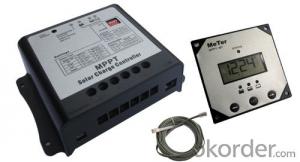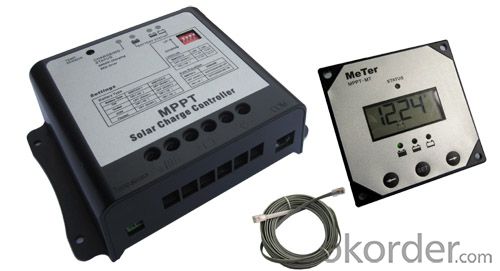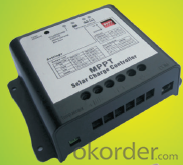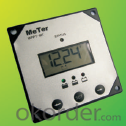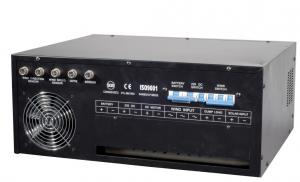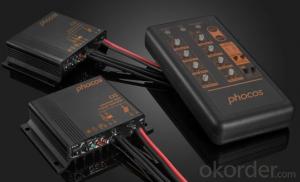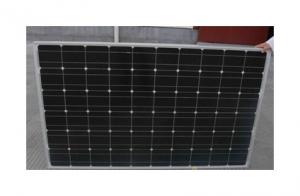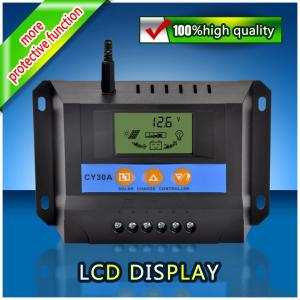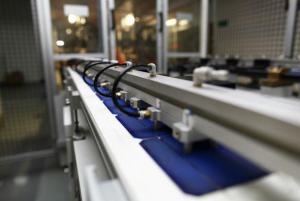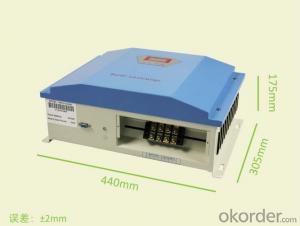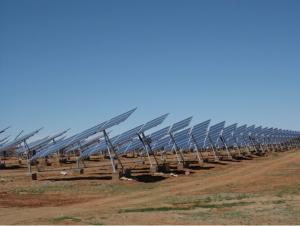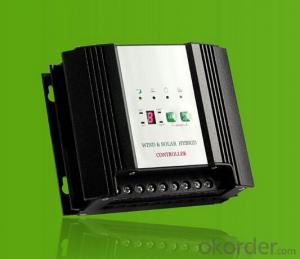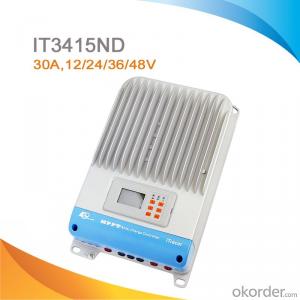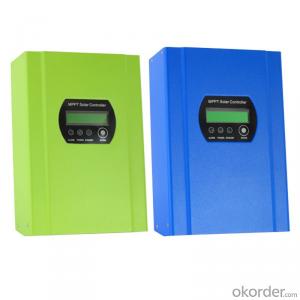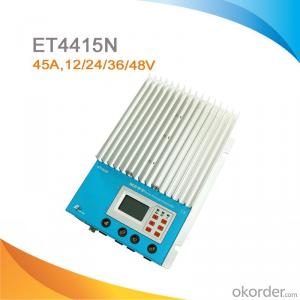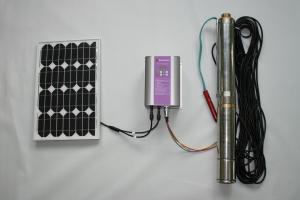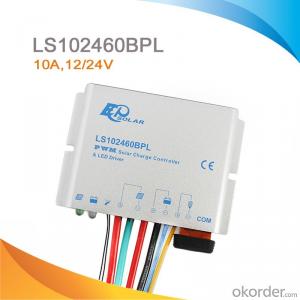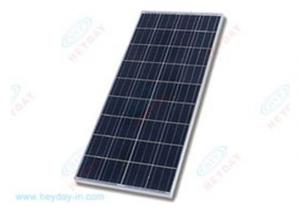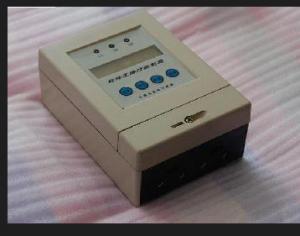1052971982 Solar Controllers - MPPT Solar Charge Controller + 4-Stage Charging + Remote Meter (Options)
- Loading Port:
- Shekou
- Payment Terms:
- TT OR LC
- Min Order Qty:
- 100 unit
- Supply Capability:
- 100000 unit/month
OKorder Service Pledge
OKorder Financial Service
You Might Also Like
1 The solar charge controllers with MPPT (Maximum Power Point Tracking technology)
2.Than PWM charge controller can improve the charging efficiency of 30%
3.12V/24V system Automatic detection
4. four-stage charge mode
5. solar panels open-circuit voltage: 75V
6. External LCD display, real-time display of the various parameters of the controller, and the fault code
7. Full electronic protection, with low voltage protection, overcharge protection, automatically restore the connection, anti-reverse feature
8. PCB board with waterproofing
Technical data
MODEL | MPPT7510 | MPPT7515 | |
| System voltage | 12V/24V Automatic detection | ||
| Rated battery current | 10A | 15A | |
| PV max. input voltage | 75V | ||
| PV max. input power | 12V system:150W 24V system:300W | 12V system: 200W | |
| Self-consumption | <35ma< td=""> | ||
Meter connection | RJ45 (8-PIN) | ||
| Battert voltage range | 7V-36V | ||
| Temp. conpensation range | -5mV/ ℃/cell | ||
| Low-voltage disconnect | 11.5V /11V (option): 24V system:×2 | ||
| Regulation method | 4-stage charge mode | ||
| Low-voltage reconnect | 12.5V ; 24V system:×2 | ||
| Operating Temperature | -40℃--60℃ | ||
| Dimensions | 152 ×113×47mm | ||
| Weight | 0.6kg | ||
- Q: How do you prevent battery overcharging with a solar controller?
- A solar controller prevents battery overcharging by regulating the charging process. It monitors the voltage of the battery and adjusts the charging current accordingly. Once the battery reaches its optimal charge level, the solar controller reduces or stops the charging to prevent overcharging, thus protecting the battery from potential damage.
- Q: How do you protect a solar controller from dust and debris?
- One way to protect a solar controller from dust and debris is by installing a protective cover or enclosure over it. This cover should be made of a durable and weather-resistant material to ensure long-term protection. Additionally, regular cleaning and maintenance of the surrounding area can help minimize the accumulation of dust and debris.
- Q: Can a solar controller handle power fluctuations from the battery bank?
- Yes, a solar controller is designed to handle power fluctuations from the battery bank. It regulates and stabilizes the flow of power between the solar panels and the batteries, ensuring that the battery bank receives a consistent and appropriate level of charge. This helps to protect the batteries from overcharging or undercharging, and ensures efficient utilization of the solar energy.
- Q: Can a solar controller be used with solar-powered electric vehicle charging stations?
- Yes, a solar controller can be used with solar-powered electric vehicle charging stations. A solar controller helps regulate and optimize the charging process by managing the flow of electricity from the solar panels to the charging station. It ensures efficient charging and protects the batteries from overcharging or undercharging, thereby enhancing the overall performance and lifespan of the charging station.
- Q: Can a solar controller be used with solar-powered indoor cooling systems?
- Solar-powered indoor cooling systems can utilize a solar controller to regulate the flow of electricity. This device ensures efficient charging of batteries from solar panels and prevents overcharging or discharging. Regardless of whether it is a solar-powered air conditioner, evaporative cooler, or any other cooling system, a solar controller maximizes the utilization of solar energy and guarantees smooth operation. By monitoring and controlling power flow, it enhances the overall efficiency and reliability of solar-powered indoor cooling systems.
- Q: How does a solar controller prevent batteries from discharging at night?
- A solar controller prevents batteries from discharging at night by monitoring the energy flow and regulating the charging and discharging process. It acts as a bridge between the solar panels and the batteries, ensuring that the energy generated by the panels is effectively stored in the batteries during the day and preventing any reverse current flow during nighttime.
- Q: How do you set up and program a solar controller?
- To set up and program a solar controller, start by connecting the solar panels to the controller's solar input terminals. Then, connect the controller's battery terminals to the battery, ensuring proper polarity. Next, connect any loads or devices you wish to power to the controller's load terminals. To program the controller, refer to the user manual that comes with it as different models may have varying programming methods. Generally, you will need to access the controller's settings menu using the provided buttons or interface. From there, you can adjust parameters such as battery type, charging mode, load control settings, and various protection features. It is essential to carefully follow the instructions provided by the manufacturer to ensure proper programming and optimal performance. If needed, consult a professional or seek guidance from the manufacturer's customer support for specific inquiries or troubleshooting.
- Q: How long does a solar controller typically last?
- A solar controller typically lasts around 10 to 15 years, depending on the quality and usage.
- Q: What is the typical standby power consumption of a solar controller?
- The standby power consumption of a solar controller can vary depending on the specific model and brand, but most modern controllers have a very low standby power consumption. On average, these controllers consume as little as 0.1 watts to about 1 watt when not actively controlling the solar system. Efficient design and advanced power-saving technologies enable these controllers to achieve such low standby power consumption. They are designed to minimize energy waste and only use a minimal amount of power when not actively controlling the solar system. It is important to consider that standby power consumption may also be influenced by factors like the size of the solar system, the complexity of the controller's features, and any additional accessories connected to the controller. Thus, it is always advisable to consult the manufacturer's product specifications for accurate information on the standby power consumption of a specific solar controller.
- Q: Can a solar controller be used with a solar-powered security system?
- Yes, a solar controller can be used with a solar-powered security system. A solar controller helps regulate and control the charging of batteries in a solar power system, ensuring optimal performance and protection against overcharging. This is beneficial for a solar-powered security system as it maximizes the efficiency and longevity of the batteries, allowing for reliable operation even during extended periods of low sunlight.
Send your message to us
1052971982 Solar Controllers - MPPT Solar Charge Controller + 4-Stage Charging + Remote Meter (Options)
- Loading Port:
- Shekou
- Payment Terms:
- TT OR LC
- Min Order Qty:
- 100 unit
- Supply Capability:
- 100000 unit/month
OKorder Service Pledge
OKorder Financial Service
Similar products
Hot products
Hot Searches
Related keywords
